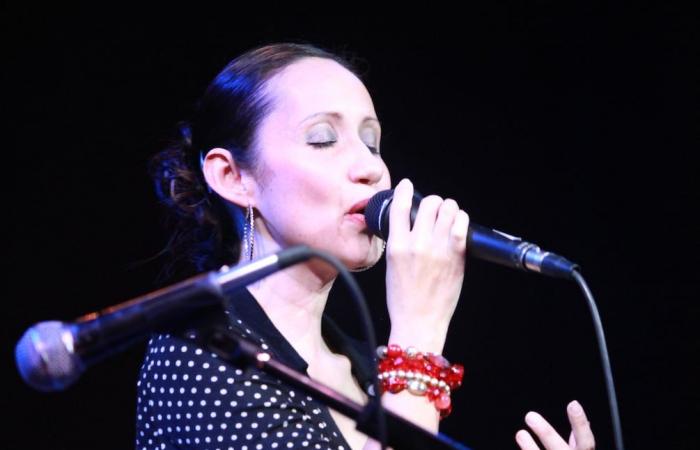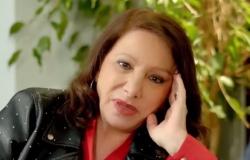The Ecuadorian Maria Tejada She is known for her singing, which fuses traditional national and Latin American sounds with jazz and unconventional instruments. The disks of her (Bridges, Corn Cribs, Songs of mistEssence, When your flowers sing) They have the seal of that meeting, the movement of the new Ecuadorian music or new folklore.
It is sung in French, it is sung in Spanish; it is heard in Europe and also in Ecuador, where Tejada immediately highlights the music of the Quito native. Alex Alvear. “It is a style in which the roots continue, but opening the horizons.”
On May 29, she and Donald Régnier presented the concert Succession at the House of Latin America in Paris, an event organized by the Embassy of Ecuador for the migrant community.
“Our vibe is always about fusing styles, always based on folklore.” And what happens to the hallway when it enters one of these combinations? Tejada describes it as taking the original creation without distorting it and putting a new garment on it.
“My husband, Donald Régnier, who has produced all of my albums in this style, arranges and harmonizes the conventional traditional chords of our signature songs. These chords are enriched, changed and give a different color and textures; It is a resource that we have also used in singing.”
Tejada likes the portuguese fado, and has taken inspiration from the singer Amalia Rodrigues, as she says that her approach is very similar to that of the pasillos. “Vocally, I have a kind of encounter, I take elements from there for when I sing the pasillos.”
He says that his proposal is very well accepted by students who are interested in Ecuadorian music, because they find it closer. “The echo that I always receive is that it is something fresh, that does not lose its roots, a new vision of something that sounds very much ours,” she emphasizes, because Although the instruments and chords change, she makes sure that the melody is the anchor and continues to bring longing for the land and family.
Student of the National Dance School, of the Chilean teacher and soprano Blanca Hauser, contestant at the OTI Festival (Ecuador chapter) and graduate of the Regional Conservatory of Metz (France), she has been part of several Latin music projects, such as Dalia Negra, Huarango, Sol del Sol, and in 2000 he founded the duo Iguazú together with Régnier.
His work in France, where he lives, has also allowed Europeans to come into contact with Ecuadorian music. “Here, Latin America is Mexico, Brazil, Argentina, Cuba and even a little bit of Chile and Peru; but Very few people know about Ecuador (…), The corridor for them is a discovery, and the fact of bringing it closer to fado makes it less alien. “They admire the melodies, the difficulty of approaching the dramatic genre with the voice.” Tejada reserves time to translate the lyrics, talk about the historical and social context and the emotional connection of each song. “Sometimes I give anecdotes about the authors or myself, and people travel through music.”
Tejada is also a singing teacher. Therefore, when she addresses the public, she makes use of her teaching profile. “I like that people connect with what I do, with the history, that they come away learning.”
Since the pandemic, she learned to teach online, and although she left Ecuador in 2021, she keeps students here and in several countries, from teenagers to older adults. She also teaches in-person classes. “I help a couple of choirs that work with world music, and I work on a nice social project, in a priority school, in a difficult neighborhood, and through music I give them alternatives.”
During this interview he decides to announce his book on popular singing method applied to Latin American music Of lime and stone. It will be on her website (maria-tejada.com) and for those who wish to listen to Tejada’s production it is on YouTube.
From now on, it is planned for private and community summer concerts and a small tour at a music festival in the vineyards. In March and February of this year she made her annual visit to Ecuador, and sang in Quito and Guayaquil, recorded unreleased songs by orchestra director Jorge Oviedo and shared the stage with guitarist Horacio Valdivieso.
She doesn’t see it as difficult for her proposal to be accepted, she thinks that in art there is room for everything. “My wish is that more people come together, and that just as other artists paved a good path for me (she mentions Alvear, Margarita Laso, the group Umbral, the duo Benítez Valencia, Homero Hidrobo, Patricia González, Olimpo Cárdenas, Julio, Pepe and Carlota Jaramillo), I also serve the generations to come. In Latin America we have huge problems, but we still have wonderful and very strong traditional music. Let there be those who continue rebuilding, revisiting, because it is the only way this is not lost. “I don’t feel alone, I have colleagues who are also in this search, what is missing is a little more unity, to organize ourselves more.” (F)







